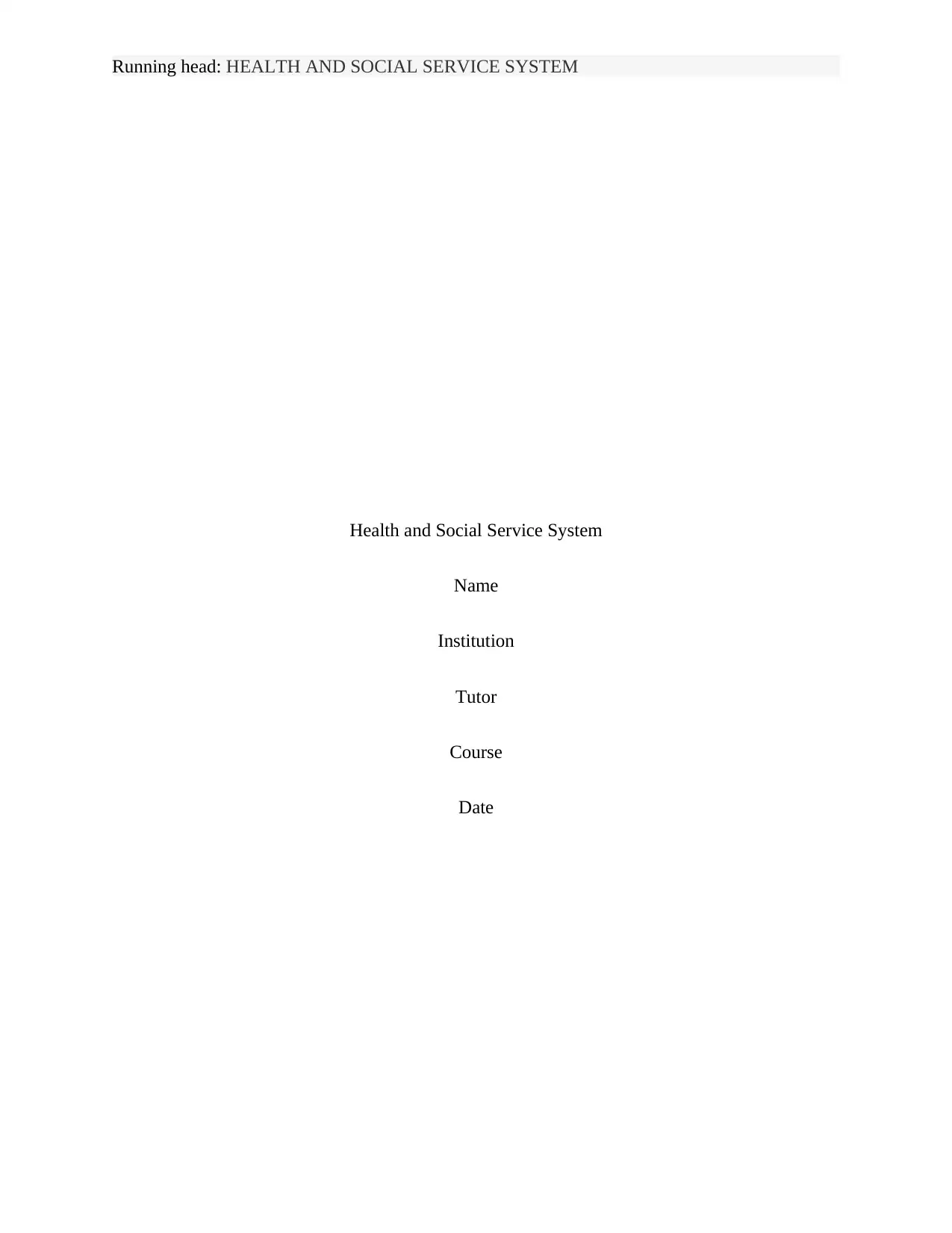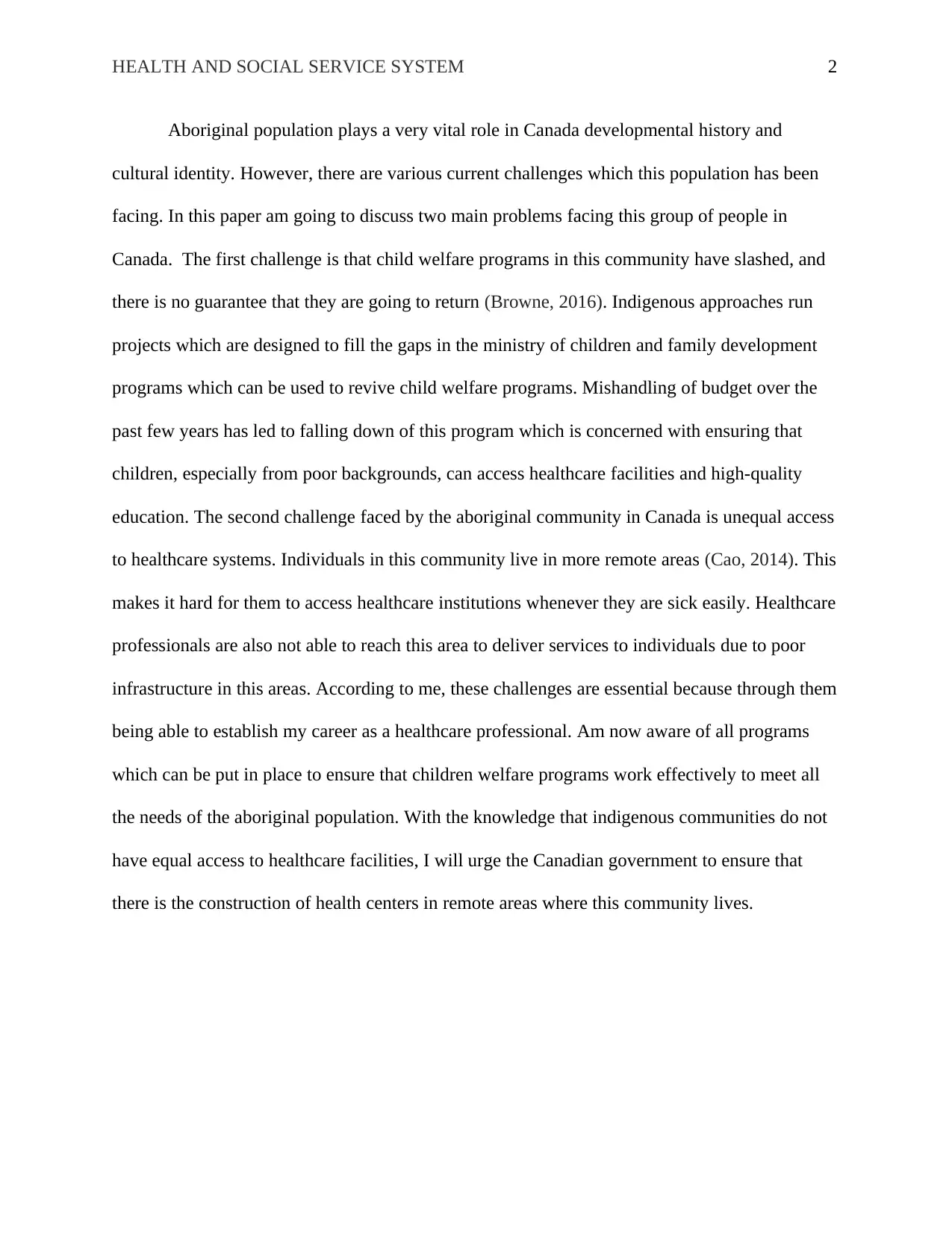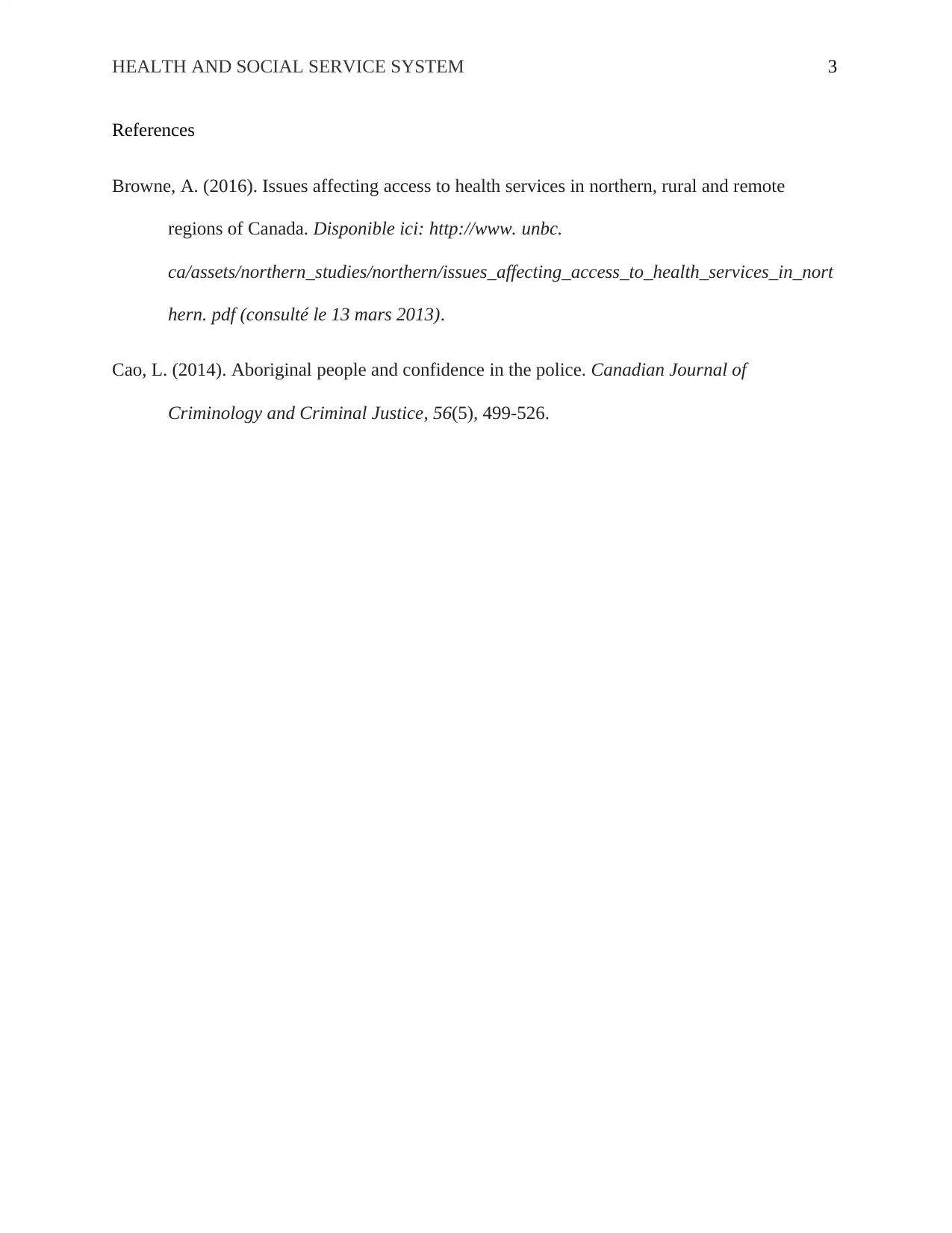Health and Social Service System: Aboriginal Population in Canada
VerifiedAdded on 2021/12/15
|3
|406
|36
Report
AI Summary
This report examines the Health and Social Service System in Canada, focusing on the challenges faced by the Aboriginal population. The report highlights two main issues: the decline of child welfare programs and unequal access to healthcare. The decline of child welfare programs is linked to budget mismanagement, impacting the ability to provide essential services to children from disadvantaged backgrounds. The second challenge is the difficulty in accessing healthcare services due to the remote locations of many Aboriginal communities and a lack of infrastructure. The report emphasizes the need for improved healthcare access and the importance of addressing these challenges. It also suggests the construction of health centers in remote areas to improve healthcare access. This analysis is crucial for aspiring healthcare professionals to understand the systemic issues affecting the Aboriginal population.
1 out of 3










![[object Object]](/_next/static/media/star-bottom.7253800d.svg)